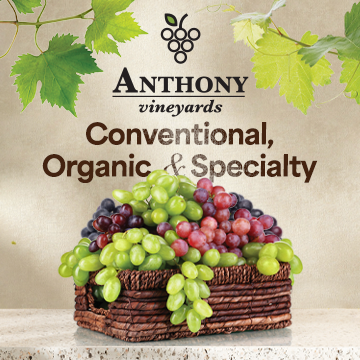MODESTO, CA – For more than 65 years, the Almond Board of California has been promoting almond consumption, providing resources for growers and handlers, and ensuring that these beloved drupes are the safest, highest-quality product possible.
I recently had an opportunity to talk to Bob Curtis, Director of Agricultural Affairs for the Almond Board of California, to find out just how the board accomplishes its goals in general and, in particular, on one aspect of the organization that may be overlooked—its work protecting the U.S. bee population.
 Bob Curtis, Director of Agricultural Affairs, Almond Board of California“We use about two-thirds of the commercial supply of honey bees in the United States to help pollinate our crop,” Bob tells me. “It’s obvious that we do take a really broad, U.S.-wide look at this subject, because almonds are so dependent on bees.”
Bob Curtis, Director of Agricultural Affairs, Almond Board of California“We use about two-thirds of the commercial supply of honey bees in the United States to help pollinate our crop,” Bob tells me. “It’s obvious that we do take a really broad, U.S.-wide look at this subject, because almonds are so dependent on bees.”
The board works in a number of ways to ensure the safe and successful work of beekeepers and bees. From funding research on pesticide use, bee nutrition, increasing genetic diversity in domesticated bees, to publishing a Honey Bee Best Management Practices for California Almonds and more, the board is a champion of apiarists, committed to keeping both bees and the almond industry they service healthy.
 Almond Orchard
Almond Orchard
“We fund research on honey bee health in some key areas,” Bob explains. “We actually conduct work on the pesticides—primarily fungicides—that are used during bloom to find out if there is any potential impact on bee populations. We can not avoid spraying fungicides at bloom, but what we can do is mitigate the exposure of the bees to the fungicides and determine, as well, if they have any impact on the bees.”
Through the board’s research, a set of best practices have been developed with strictures on what types of pesticides can safely be applied and when and where these pesticides can be used to ensure both the success of the almond industry and the preservation of the ecosystem in which the industry operates.
 A bee pollinating an almond blossom
A bee pollinating an almond blossom
And, Bob tells me, this is only one aspect of the Almond Board of California’s mission. From aggregating statistics on almonds and almond production, encouraging consumption through marketing efforts, and more, the board works tirelessly to promote and educate the industry and the public on the merits of this much-loved crop and continue the success and sustainability of the almond industry.
“The Almond Board is a service organization for the whole industry,” Bob adds. “Marketing and promotion is our largest budgeted effort. And this is just one piece of the Board’s mission—the research that we fund and the outreach that we do in terms of best management practices. It’s more than just pollination. We also have a sustainability program that involves best practices and sustainability assessments. We fund research on almond nutrition. We have a food safety program that is considered a role model across the food industry.”
AndNowUKnow will continue to report with more on organizations working to ensure the future of fresh food.
Companies in this Story
California Almonds
California Almonds offer a one-of-a-kind crunch that will keep you in the game for a long time to come, whether you’re…






